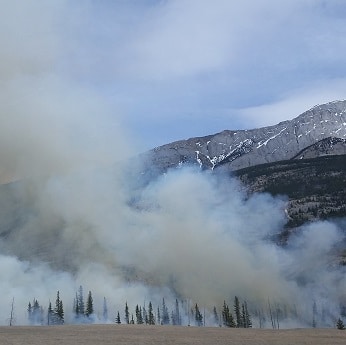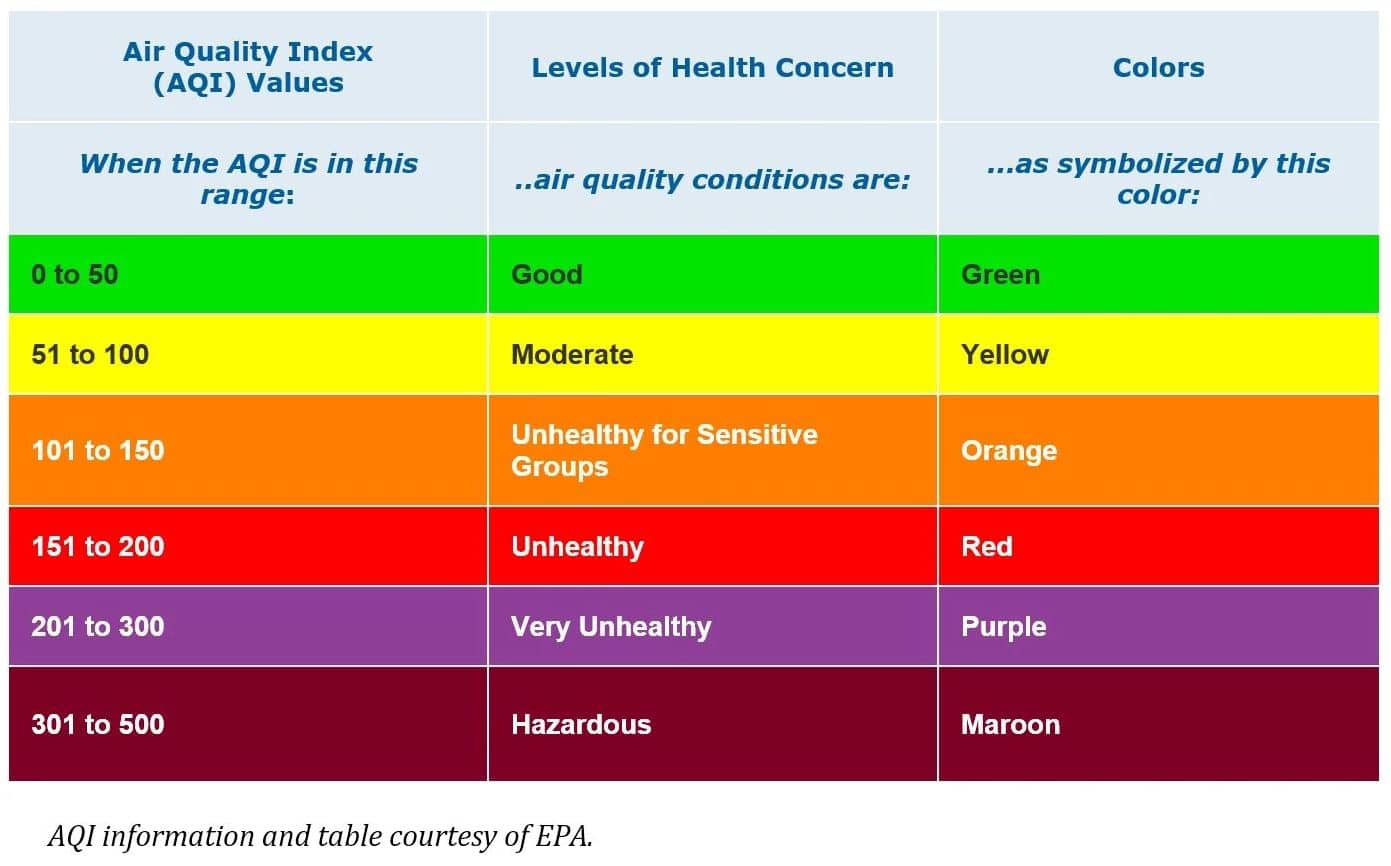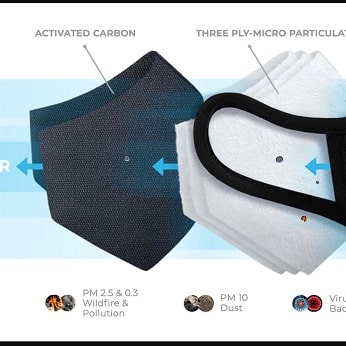
Huge fires, covering millions of acres of land, have raged through the West Coast of America for many summers. By wearing masks that can filter out fine particles we are far less likely to be breathing in the harmful toxins produced by this smoke.
Expanding on this principle, we wanted to provide a bit more detail about the correlation between wildfires and AQI. AQI (which stands for the Air Quality Index) is a measurement of an area’s air quality. This reading takes place daily and provides key information about the levels of different pollutants in the air.
The Air Quality Index (AQI) is an index for reporting daily air quality. It simply tells you how clean or polluted the air by dividing it into several categories.

Each category defines a different level of a health concern as shown below:
• "Good" AQI is 0 to 50. Air quality is considered satisfactory, and air pollution poses little or no risk.
• "Moderate" AQI is 51 to 100. Air quality is acceptable; however, for some pollutants, there may be a moderate health concern for a very small number of people. For example, people who are unusually sensitive to ozone may experience respiratory symptoms.
• "Unhealthy for Sensitive Groups" AQI is 101 to 150. Although the general public is not likely to be affected at this AQI range, people with lung disease, older adults and children are at greater risk from exposure to ozone.
• "Unhealthy" AQI is 151 to 200. Everyone may begin to experience some adverse health effects, and members of the sensitive groups may experience more serious effects.
• "Very Unhealthy" AQI is 201 to 300. This would trigger a health alert signifying that everyone may experience more serious health effects.
• "Hazardous" AQI is greater than 300. This would trigger a health warning of emergency conditions. The entire population is more likely to be affected.
How to choose the right mask during a wild fire:
Wildfire smoke has 2.5 particulate matter. PM2.5 is a very small particle that can penetrate the lungs, move into your bloodstream, and seriously compromise lung function. Therefore, it’s so important to invest in a mask that can filter wildfire smoke out. If you continue to breathe in PM2.5 without a mask, you could experience shortness of breath, nose and throat irritation, excessive coughing, asthma attacks, and
reduced lung and heart function.
The Cambridge Mask PRO can fit tightly to your face, filtering out tiny but extremely dangerous PM2.5. It can filter almost 100% of pollution, gases, and 99.6% of viruses, and 99.7% of bacteria. The mask features a Three-Ply Micro Particulate Layer which blocks out particulate pollution including PM2.5. Our Cambridge Mask also filters PM10, PM0.3, protects you from smoke hazards, and COVID-19, enabling you to stay safe during both the pandemic and wildfire.
Provider of information



